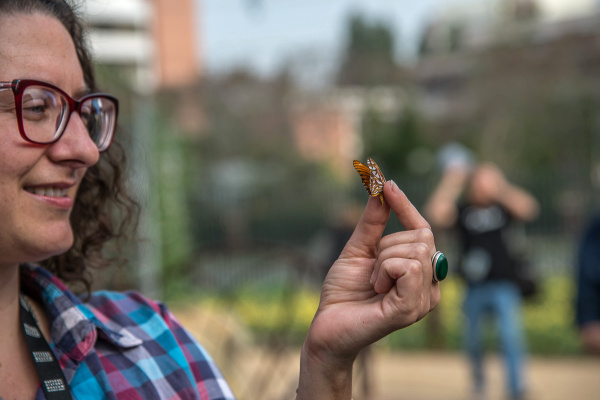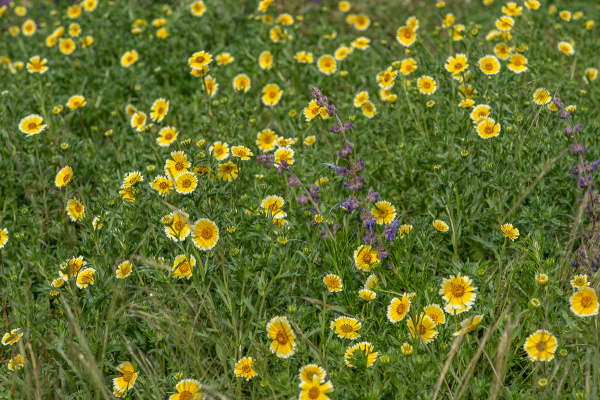Of course, the new Pollinator Garden at the Natural History Museum of Los Angeles would have its grand opening on the first day of spring, the season of flowers, bees, butterflies (and occasional allergies). With the unveiling of the Pollinator Garden, the NHM’s outdoor nature garden/lab (built on an asphalted parking lot) is now finally complete.
This demonstration/working garden/lab should be an incentive to other public – and private – companies that the land surrounding their buildings can house both a Throne to Capitalism and an Urban Oasis. Bumble bees and hummingbirds can certainly complement the thickest of financial portfolios.
At the opening of the Pollinator Garden, determined youngsters wandered the garden with SLR cameras in search of winged wonders – like the gulf fritillary butterfly that NHM’s resident buggy lady Lila Higgins caught earlier.

Other pint-sized explorers were counting how many critters land on one plant for a minute – sort of a mini invertebrate inventory. Elsewhere artistic kids were crafting bug houses out of sticks, twigs and other greenery; others were just mesmerized by the grandeur of green.

Home gardeners would be envious with the attention to color, texture, detail and plant selection – tasks that gave NHM staffers countless hours of arm wrestling and discussion, said Carol Bornstein, director of the Nature Garden at NHM. After all, the garden is designed to be a smorgasboard for pollinators, “the emphasis was on creating a habitat for wildlife,” she explained. But when you are trying to feed hundreds of species – from creepy crawlies to birds to flies to bees to…well, it can be darn exhausting planning a menu.

And once you got the plate down for spring… what about later in the year? Will that flowering spring bush produce seeds in the fall? Will that tree blooming today offer something in the winter? Just how will we make everyone happy all year-round?
Gardening is not as easy as merely tossing seeds to the ground or simply digging a hole, says NHM’s Head Gardener Richard Hayden as he walks through the garden explaining how the previous soil here was so poor it needed to be amended and amended and amended. Native plants can be tricky to establish, he added, but once they take hold, they are right at home.
Hayden stops to scan a row of tidy tips for bees and other butterflies. Sometimes being a gardener is being open to mystery. “We planted this and we think we know what we will attract, but we really don’t know what we might see in this garden,” he says.

So far, the garden has attracted its share of wildlife along with migratory and resident birds – including nesting bushtits that crafted their nest out of oak flowers, silk floss, newspaper and candy wrappers. These tiny flappers – only the hummingbird is smaller – are probably tending 5-6 eggs in their pouch-like nest. The bushtits must have known they are on museum ground since their nest is easily spotted from the bird watching nook of the garden.
It’s easy to get lost inside of the Pollinator Garden, the Edible Garden or any of the other gardens at the NHM. They are cheery spaces, awash in green and buzzing with flying things. We want more of these for Los Angeles and Southern California. Please.
— Brenda Rees, Editor
